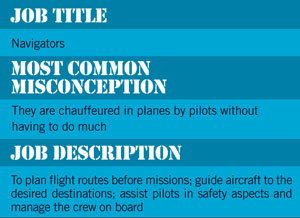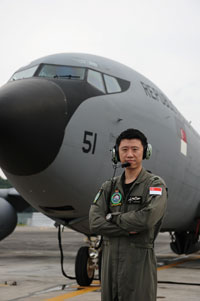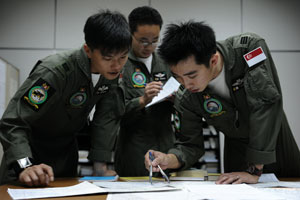OPS & TRAINING
PLOTTING PATHS IN SKIES
15 Nov 2010
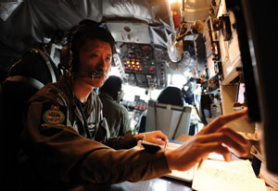
As the human Global Positioning Systems of the Republic of Singapore Air Force (RSAF), the navigators ensure that their squadrons' planes are never lost. Find out how they manage it in this fourth instalment of the six-part lesser-known vocations series.
It is often said that "it's not the destination that's important, but the journey". But for a navigator, getting to the right place is just as important as the process of getting there.
In the RSAF, navigators play a crucial role in ensuring that the planes arrive at their destinations safely. Currently, there are navigators in 112 Squadron (SQN) and 122 SQN, which operate the KC-135R Stratotankers and the C-130 Hercules transport aircraft respectively.
Lieutenant Colonel (LTC) Zakir Hamid, Commanding Officer (CO) of 112 SQN, which performs air-to-air refuelling, airlifts and aeromedical evacuations, explained the role of navigators in the squadron: "Navigators are essential members of the unit. In various missions, they ensure that the best and most efficient routes are chosen, considering variables such as weather, winds, altitude and restricted airspace."
Deputy CO of 122 SQN, LTC Goh Chong Bee, added: "Navigators also assist the pilots in many aspects, such as safety, crew resource management, identification of critical mission-essential information and equipment, mission planning and execution." His squadron conducts search and locate operations, peace support operations and airlifts.
Multi-role job
Unlike what their job title suggests, these air crew do more than just navigate the aircraft.
Before each flight, navigators are required to do ground preparation. This involves studying weather patterns and charting out flight routes that avoid restricted areas such as training air spaces belonging to other countries.
Up in the air, they ensure the aircraft sticks to its planned route by monitoring navigation systems such as the Inertial Navigation System and Global Positioning System, which give them information about their location. They also monitor weather radars. Should they foresee bad weather ahead, they guide pilots to make a detour, or to fly over or under the bad weather cell.
They also assist the pilots with their workload, said Captain (CPT) Yang Chee Hwa, a navigator in 122 SQN. "For example, if an incident like a wing fire happens when the pilots are busy trying to land the aircraft quickly, we'll help by communicating with air traffic controllers about the emergency.
"We're like an extra pair of eyes and hands for the pilots."
For 112 SQN's navigators like CPT Adrian Eng, their job also involves fuel calculation and monitoring fuel levels.
"During ground preparation, I have to check with our receivers, which are the fighter jets, how much fuel they require to accomplish their mission. From there, I plan how much fuel our tanker needs to carry to support the entire mission," he said.
"I also monitor the fuel level in the tanker, and I must ensure that there's a minimum of about 10,000 litres of fuel when the tanker attempts to land. This is so that we have enough fuel to react to any emergencies that may happen there, for example, if we are unable to land the aircraft on our first attempt due to bad weather and have to make subsequent landing attempts.
"In flight, more fuel is consumed when we have to make detours due to bad weather, or when our receivers require more fuel. In such situations, I have to make certain adjustments to the flight plan to ensure we have sufficient fuel for the tanker to land."
Quick thinking needed
Although pilots are equipped with navigation knowledge and tools to guide them to their destinations, navigators play a pivotal role in achieving safety and the mission objectives, said CPT Eng.
"When everything goes smoothly, our job is to do mission planning and monitor the systems on board. But when things don't turn out as planned, that's when we really earn our pay.
"For example, when weather changes or airborne emergencies occur, we have to think on our feet to ensure safety throughout the flight...We need to do all we can to avoid hazardous weather like thunderstorms and sandstorms."
For CPT Yang, one of the toughest things about the job is planning for missions.
He said: "It's challenging to formulate a good flight plan for our operations, because you have to work with many agencies within the Singapore Armed Forces and even with overseas counterparts to ensure that the mission goes smoothly."
Noble undertaking
Despite the challenges faced, one perk of their job is the opportunity to travel the world, said CPT Eng, who has interacted with counterparts from Australia, France, India, New Zealand, Thailand, and the United States in his five years as a navigator.
More importantly, they relish the altruistic nature of their work. "Although we're part of the military, we're not all about ferrying paratroopers and refuelling jets. At times, we do something good for our neighbours in the region, in the case of natural disasters," noted CPT Eng.
Said CPT Yang, who participated in Humanitarian Assistance and Disaster Relief missions such as helping earthquake victims in Indonesia in 2009 and victims of Cyclone Nargis in Myanmar in 2008: "Those whom we helped were total strangers to us, but there is a sense of achievement knowing that we made life better for them."
He concluded: "Even though our part may seem small, and we're often behind the scenes, it's satisfying to know that we contribute directly to defending Singapore and extending goodwill to neighbouring countries in times of need."
ALSO READ IN OPS & TRAINING
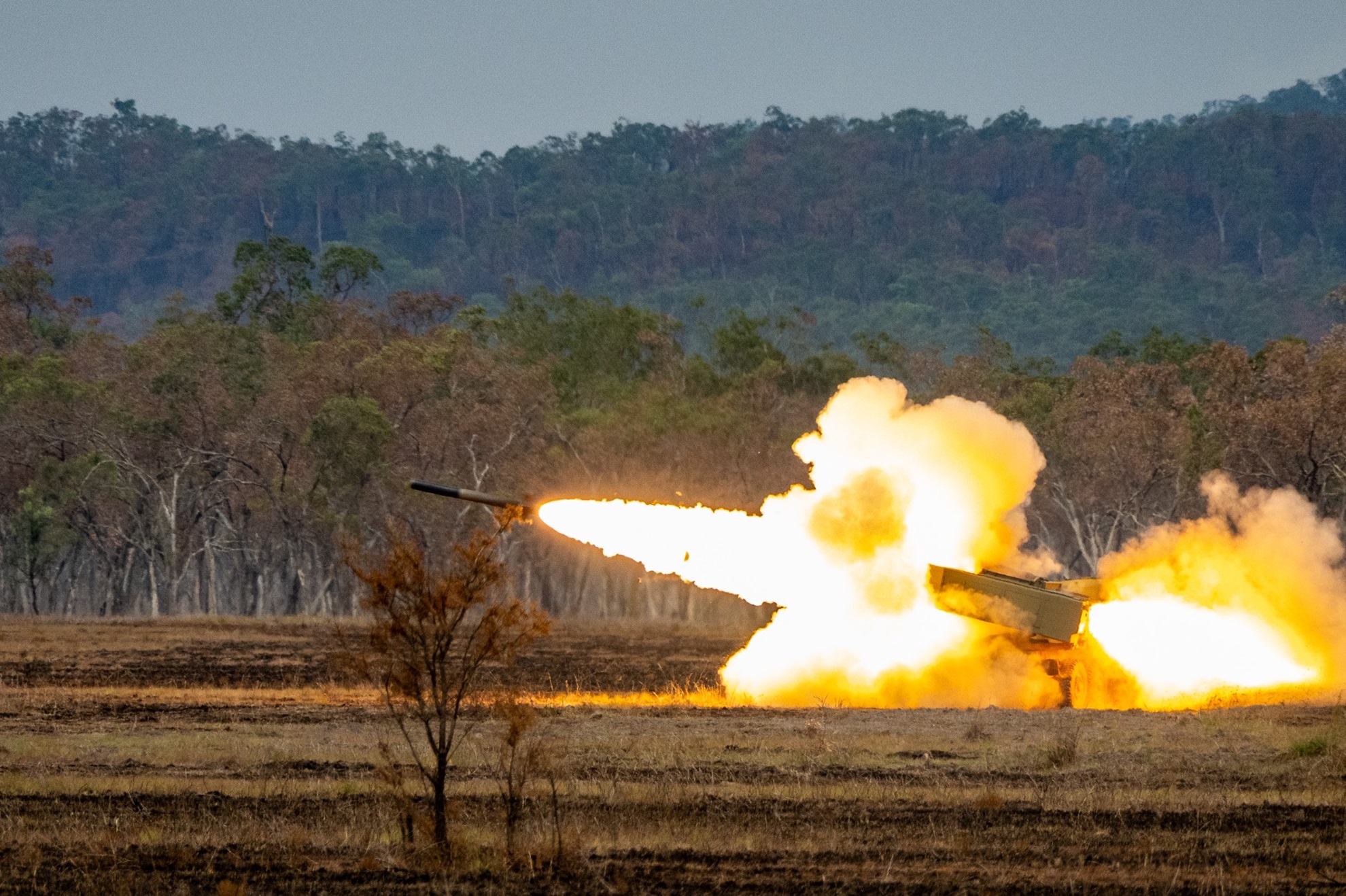
Exercise Wallaby 2025: To see better, shoot faster
31 Oct 2025
The SAF focuses on complex strike missions and multi-domain integration in Exercise Wallaby 2025, the 35th edition of its largest unilateral overseas exercise.
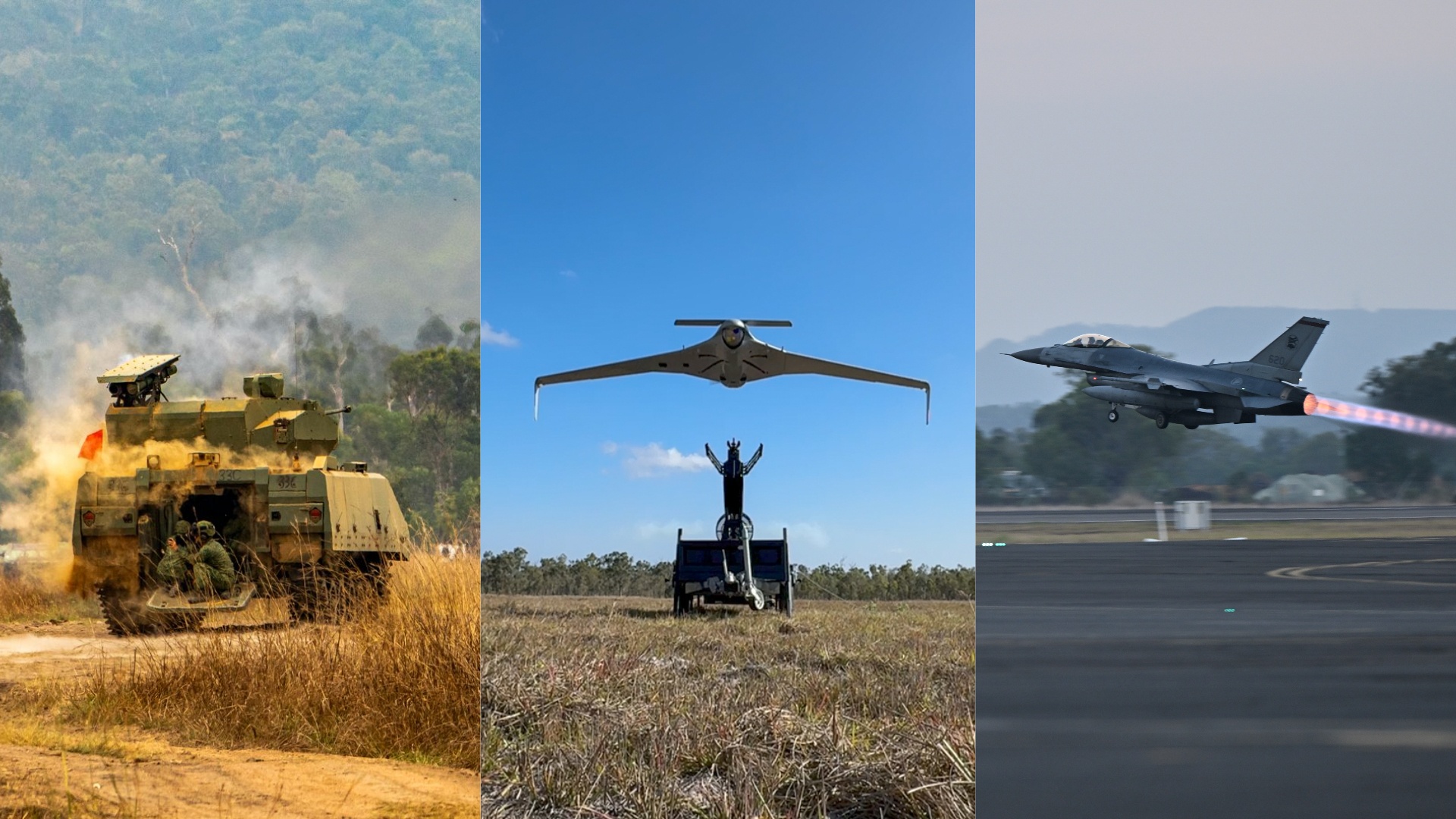
Ex Wallaby 25 – Greater Integration and Complexity
25 Oct 2025
The 35th edition of the SAF’s largest unilateral overseas exercise is an opportunity for expanded scale and deeper integration towards an effective, networked fighting force.

Ex Forging Sabre ramps up use of unmanned assets in integrated strike operations
12 Sep 2025
In this 10th edition of Exercise Forging Sabre, the SAF sharpened its cutting edge for the dynamic modern battlefield, with expanded integration between manned and unmanned platforms.


